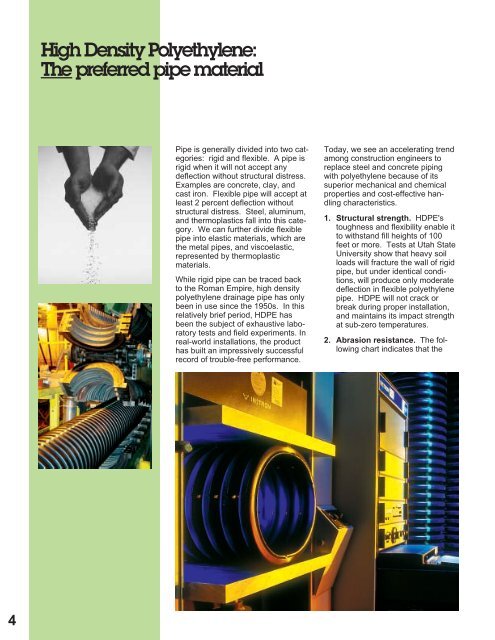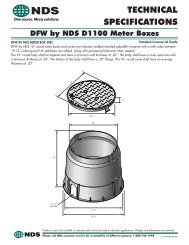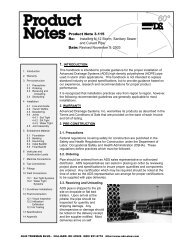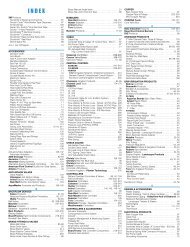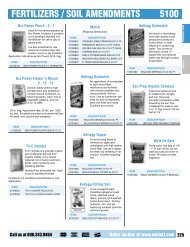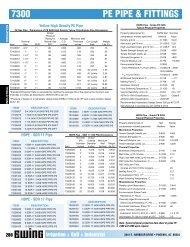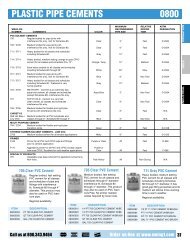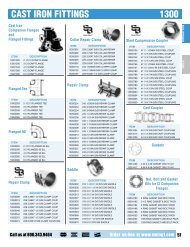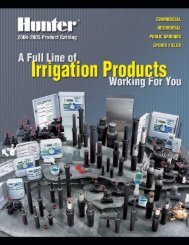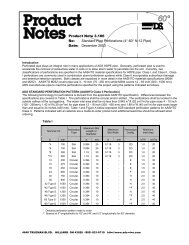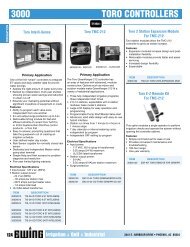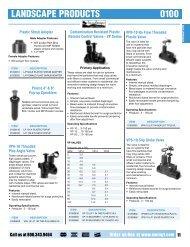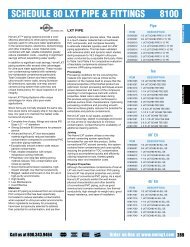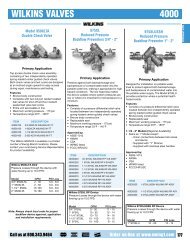HDPE Drainage Products
HDPE Drainage Products
HDPE Drainage Products
Create successful ePaper yourself
Turn your PDF publications into a flip-book with our unique Google optimized e-Paper software.
High Density Polyethylene:<br />
The preferred pipe material<br />
Pipe is generally divided into two categories:<br />
rigid and flexible. A pipe is<br />
rigid when it will not accept any<br />
deflection without structural distress.<br />
Examples are concrete, clay, and<br />
cast iron. Flexible pipe will accept at<br />
least 2 percent deflection without<br />
structural distress. Steel, aluminum,<br />
and thermoplastics fall into this category.<br />
We can further divide flexible<br />
pipe into elastic materials, which are<br />
the metal pipes, and viscoelastic,<br />
represented by thermoplastic<br />
materials.<br />
While rigid pipe can be traced back<br />
to the Roman Empire, high density<br />
polyethylene drainage pipe has only<br />
been in use since the 1950s. In this<br />
relatively brief period, <strong>HDPE</strong> has<br />
been the subject of exhaustive laboratory<br />
tests and field experiments. In<br />
real-world installations, the product<br />
has built an impressively successful<br />
record of trouble-free performance.<br />
Today, we see an accelerating trend<br />
among construction engineers to<br />
replace steel and concrete piping<br />
with polyethylene because of its<br />
superior mechanical and chemical<br />
properties and cost-effective handling<br />
characteristics.<br />
1. Structural strength. <strong>HDPE</strong>'s<br />
toughness and flexibility enable it<br />
to withstand fill heights of 100<br />
feet or more. Tests at Utah State<br />
University show that heavy soil<br />
loads will fracture the wall of rigid<br />
pipe, but under identical conditions,<br />
will produce only moderate<br />
deflection in flexible polyethylene<br />
pipe. <strong>HDPE</strong> will not crack or<br />
break during proper installation,<br />
and maintains its impact strength<br />
at sub-zero temperatures.<br />
2. Abrasion resistance. The following<br />
chart indicates that the<br />
4


